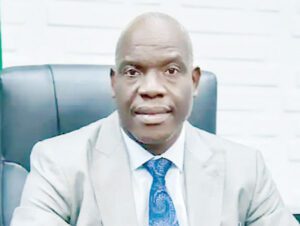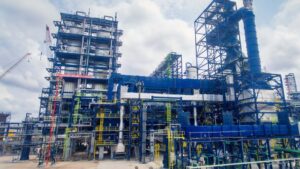
44,068MW stranded as power sector loses N645.15bn
The cumulative revenue lost by the power sector in 2020 was N645.15 billion, while the total quantum of electricity constrained during the period was 44,068 megawatts, investigation has shown.
Constrained power is the quantum of electricity that could not be generated and supplied to the national grid as a result of various challenges to power production in the sector.
It was learnt that the major impediments to power generation during the 12-month period were unavailability of gas, transmission bottlenecks and distribution constraints.
Documents obtained by our correspondent from the Federal Ministry of Power in Abuja showed that from January till December 2020, the sector lost billions of naira on a monthly basis.
It recorded its highest constrained revenue of N65.55bn in March, while the lowest loss of N25.55bn was posted in December.
The revenue losses posted in January, February, April, May, June and July were N56.41 billion, N54.96 billion, N64.64 billion, N61.6 billion, N61.77 billion and N63.21 billion respectively.
In the months of August, September, October and November, the sector’s constrained revenues were N62.92 billion, N45.99 billion, N52.58 billion and N29.97 billion respectively.
Further findings showed that while the sector posted monthly revenue losses, it also recorded large monthly constraints to power generation.
It was observed that in January 2020, for instance, the total quantum of electricity that was constrained in the sector was 3,791MW.
The 4,489MW of electricity that could not be generated and supplied to the national grid in April was the highest quantum of electricity that was constrained in a single month in 2020.
Figures from the documents showed that the total quantum of power constrained on a monthly basis were 3,949MW in February; 4,406MW in March; 4,140MW in May; 4,290MW in June; and 4,248MW in July.
Others include 4,229MW in August; 3,194MW in September; 3,534MW, October; 2,081MW, November; and 1,717MW, December.
Our correspondent also gathered that the overall highest peak power generated on the national grid during the 12-month period was recorded in the month of October.
The peak power recorded in October was 5,520MW, as this was followed by the 5,517MW posted in November and the 5,504MW recorded last month.
The peak power generation recorded on the grid in other months include 4,931MW, 5,268MW, 4,803MW and 5,316MW in the months of January, February, March and April respectively.
For the months of May, June, July, August and September, the peak power figures were 5,296MW, 5,173MW, 5,272MW, 5,420MW and 5,195MW respectively.
The documents also showed the average quantum of energy sent out to power users across the country on a monthly basis.
In the month of January, for instance, the average energy sent to power consumers nationwide through the national power grid was 3,821MW-hour/hour.
For the months of February, March, April, May, June and July, the average energy sent were 4,114MWH/H, 3,912WH/H, 4,099WH/H, 4,147WH/H, 3,708WH/H and 3,830WH/H respectively.
The average energy sent out in the months of August, September, October, November and December stood at 4,049WH/H, 3,872WH/H, 4,168WH/H, 4,381WH/H and 4,504WH/H respectively.
The revenue losses and constrained power in the sector had been attributed to a number of factors by operators in the business.
Power generation companies, for instance, had often complained about the inability of distributors to accept electricity generated by Gencos as well as the inefficiency of the Transmission Company of Nigeria to effectively wheel energy.
In addressing the concerns in the sector, the industry regulator explained that it was vital to have the right pricing in the business.
The Commissioner, Legal, Licensing and Compliance of the Nigerian Electricity Regulatory Commission, Dafe Akpeneye, told our correspondent in Abuja that without the right pricing, the power business would find it tough to thrive.
He said, “The industry has not been able to stand on its own because the pricing hasn’t been right.
“And if the pricing was right, have you seen other investors coming in, knocking the door to invest in the Nigerian distribution sub-sector?
“Everybody looks at the pricing and they will say no, we can’t get our monies back because the pricing isn’t right.”
Akpeneye, however, noted that the regulator was working to get the pricing right in order to address the revenue shortfalls in the industry.
He said, “In getting the pricing right, with the announcement of service reflective tariff that we’ve done, it has spurred interest in the Nigerian power sector and people are looking to come in to invest in different aspects.
“This is because investment follows certainty. Nobody will invest where he is going to make a loss. But where you can do your projections and see that there is a return, people will invest.”
He expressed hope that the power sector would stabilise once the implementation of the service reflective tariff persists, adding that it would further enhance revenue generation in the industry.



